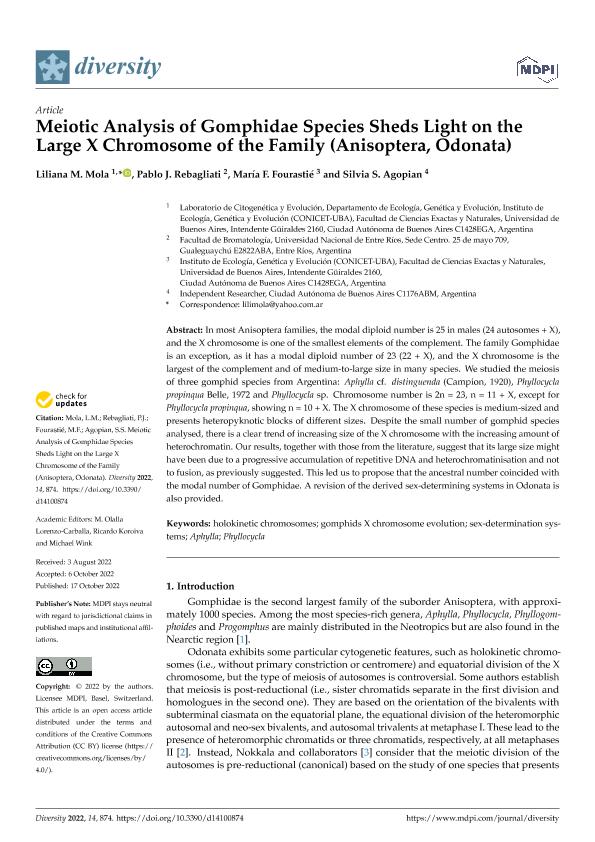Artículo
Meiotic Analysis of Gomphidae Species Sheds Light on the Large X Chromosome of the Family (Anisoptera, Odonata)
Fecha de publicación:
10/2022
Editorial:
MDPI
Revista:
Diversity
ISSN:
1424-2818
Idioma:
Inglés
Tipo de recurso:
Artículo publicado
Clasificación temática:
Resumen
In most Anisoptera families, the modal diploid number is 25 in males (24 autosomes + X), and the X chromosome is one of the smallest elements of the complement. The family Gomphidae is an exception, as it has a modal diploid number of 23 (22 + X), and the X chromosome is the largest of the complement and of medium-to-large size in many species. We studied the meiosis of three gomphid species from Argentina: Aphylla cf. distinguenda (Campion, 1920), Phyllocycla propinqua Belle, 1972 and Phyllocycla sp. Chromosome number is 2n = 23, n = 11 + X, except for Phyllocycla propinqua, showing n = 10 + X. The X chromosome of these species is medium-sized and presents heteropyknotic blocks of different sizes. Despite the small number of gomphid species analysed, there is a clear trend of increasing size of the X chromosome with the increasing amount of heterochromatin. Our results, together with those from the literature, suggest that its large size might have been due to a progressive accumulation of repetitive DNA and heterochromatinisation and not to fusion, as previously suggested. This led us to propose that the ancestral number coincided with the modal number of Gomphidae. A revision of the derived sex-determining systems in Odonata is also provided.
Archivos asociados
Licencia
Identificadores
Colecciones
Articulos(IEGEBA)
Articulos de INSTITUTO DE ECOLOGIA, GENETICA Y EVOLUCION DE BS. AS
Articulos de INSTITUTO DE ECOLOGIA, GENETICA Y EVOLUCION DE BS. AS
Citación
Mola, Liliana Maria; Rebagliati, Pablo Javier; Fourastié, María Florencia; Agopian, Silvia S.; Meiotic Analysis of Gomphidae Species Sheds Light on the Large X Chromosome of the Family (Anisoptera, Odonata); MDPI; Diversity; 14; 10; 10-2022; 1-17
Compartir
Altmétricas




